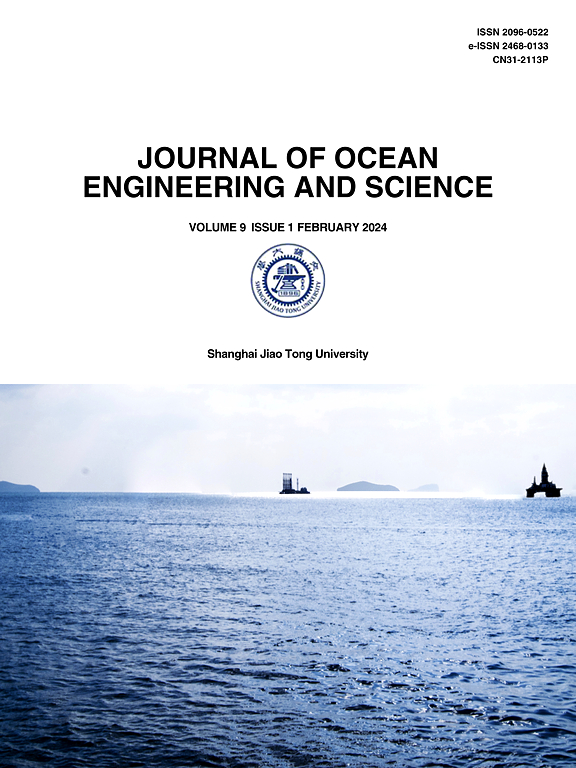基于航行状态识别模型的极地航母船型优化
IF 11.8
1区 工程技术
Q1 ENGINEERING, MARINE
引用次数: 0
摘要
极地航母可以在开阔水域和浮冰区域运行,不同的航行环境对船体形状设计提出了不同的要求。确定这些导航区域的比例对于实现平衡的船体形状至关重要,从而优化开放水域性能和冰上能力。本文提出了一种导航状态识别模型(NSRM),该模型利用来自船舶轨迹的GPS数据来区分不同的导航状态,从而可以评估航行中遇到的开阔水域和浮冰的比例。在此基础上,提出了一种用于极地船舶的船体形状快速优化方法,旨在使开放水域和浮冰区域的总阻力最小。总阻力是根据NSRM确定的路线冰雪覆盖部分和开放水域部分阻力的加权和来计算的。开放水域阻力计算采用Rankine源法和reynolds - average Navier-Stokes (RANS)法,浮冰条件下冰阻力计算采用Juva和Riskas公式。此外,将该优化方法应用于具有隐形球首的母船,得到了最优的船首船体形状。这证明了基于nsrm的优化方法在极地航母船型设计中的适用性。本文章由计算机程序翻译,如有差异,请以英文原文为准。
Hull form optimization for polar carrier based on navigation state recognition model
Polar Carriers operate in both open water and brash ice areas, where differing navigation environments impose varying requirements on hull form design. Determining the proportion of these navigation areas is crucial for achieving a balanced hull form that optimizes both open water performance and ice-going capabilities. This paper proposes a Navigation State Recognition Model (NSRM) that utilizes GPS data from ship tracks to distinguish between different navigation states, allowing for an assessment of the proportion of open water and brash ice encountered during voyages. Based on the NSRM, a rapid hull form optimization method is developed for polar ships, aiming to minimize total resistance across both open water and brash ice areas. The total resistance is calculated using a weighted sum of the resistances in ice-covered and open-water sections of the route, as determined by the NSRM. The Rankine source and Reynolds-Averaged Navier-Stokes (RANS) methods are employed to calculate open-water resistance, while Juva and Riskas formula is used to estimate ice resistance in brash ice conditions. Additionally, the optimization method is applied to a parent ship with an invisible bulbous bow, resulting in an optimized bow hull form. This demonstrates the applicability of the NSRM-based optimization method for the design of Polar Carrier hull forms.
求助全文
通过发布文献求助,成功后即可免费获取论文全文。
去求助
来源期刊

Journal of Ocean Engineering and Science
Multiple-
CiteScore
11.50
自引率
19.70%
发文量
224
审稿时长
29 days
期刊介绍:
The Journal of Ocean Engineering and Science (JOES) serves as a platform for disseminating original research and advancements in the realm of ocean engineering and science.
JOES encourages the submission of papers covering various aspects of ocean engineering and science.
 求助内容:
求助内容: 应助结果提醒方式:
应助结果提醒方式:


